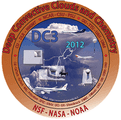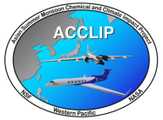The In Situ Airborne Formaldehyde (ISAF) is an airborne optical sensor developed by NASA's Goddard Space Flight Center (GSFC). ISAF uses laser-induced fluorescence (LIF) to measure formaldehyde throughout the troposphere and lower stratosphere. It operates at a wavelength of 353 nm and has a sampling frequency of 1 Hz. ISAF can detect formaldehyde concentrations from 10 pptv to hundreds of ppbv with an accuracy of 10%.


Instrument Details
- Optical/Photon
- Earth Science > Atmosphere > Atmospheric Chemistry > Carbon And Hydrocarbon Compounds > FormaldehydeEarth Science > Atmosphere > Atmospheric ChemistryEarth Science > Atmosphere > Atmospheric Chemistry > Carbon And Hydrocarbon Compounds
- Lower Stratosphere, Troposphere
- 1 s
- Point
- 849 THz
- https://doi.org/10.5194/amt-8-541-2015
Glenn M. Wolfe
Glenn M. Wolfe
GSFC
NASA, IRAD
other NASA repository not formally considered a DAAC by ESDS
Filter data products from this instrument by specific campaigns, platforms, or formats.
CAMPAIGNS
PLATFORMS
FORMATS









